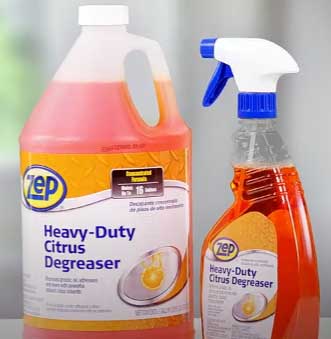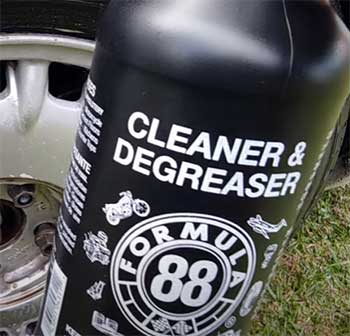I’ve spent years wrestling with rusted bolts in my garage, from old truck suspensions to stubborn bike chains, and nothing tests your patience like a seized fastener that just won’t budge.
That’s why I’m breaking down Liquid Wrench versus PB Blaster here – two heavy-hitters in the penetrating oil world. My goal? To cut through the hype with real-world insights so you can grab the right can next time you’re knee-deep in a project and save yourself the swearing.
Whether you’re a weekend warrior or a full-time fixer, let’s figure out which one keeps your tools turning smoothly.
A Brief Comparison Table
| Battleground | PB Blaster’s Edge | Liquid Wrench’s Edge | Tiebreaker |
| Rust-Busting Power | Like a sledgehammer on steroids – blasts through decades-old corrosion in minutes, perfect for that exhaust manifold nightmare. | Steady and reliable, slices moderate rust like butter but might need a second coat on the apocalypse-level stuff. | PB Blaster if your bolt’s been marinating in salt since the ’80s; Liquid Wrench for everyday garage gremlins. |
| Smell Factor | Whoa, it’s potent – think chemical fireworks that lingers like a bad blind date. Mask up! | Mild and almost pleasant, like a faint citrus cleaner; won’t clear the room. | Liquid Wrench wins for indoor jobs or if your spouse hates fumes. |
| Lube Aftermath | Leaves a slick, non-drying shield that keeps things moving and rust-free for months. | Solid anti-seize protection with Cerflon tech, but it evaporates quicker – reapply for long hauls. | PB Blaster for prevention pros; both shine post-loosening. |
| Price Punch | Around $8-10 per 11-oz can – premium for the power. | Budget champ at $4-6 – more sprays per dollar. | Liquid Wrench if you’re stocking the shelf; PB Blaster for clutch saves. |
| Application Ease | ProStraw nozzle for pinpoint sprays, but that kickback aroma sneaks up. | Precision straw and low-VOC formula – sprays clean, even upside down. | Tie: Both nail tight spots, but Liquid Wrench feels less messy. |
| Versatility Score | Marine-grade toughness for boats and bikes; handles wet ignitions like a champ. | All-purpose hero for locks, hinges, and painted surfaces without the drama. | PB Blaster for outdoor beasts; Liquid Wrench for home hacks. |
Why I Keep Both In My Toolbox – And You Should Too
Picture this: It’s a drizzly Saturday, and I’m under my ’92 Ford Ranger, fighting a frozen caliper bolt that’s been plotting against me since high school. I reach for PB Blaster first because, man, that stuff is a beast.
Introduced back in 1957, it’s earned its stripes as the #1 selling penetrant by creeping into the tiniest crevices and breaking down rust like it’s nothing.
The key?
Its intense wetting agents and non-evaporating lubricant that not only frees the part but coats it for future battles against corrosion. I’ve seen it dissolve buildup on a seized lawnmower blade that WD-40 barely scratched.
But here’s the thing – not every job needs a bazooka. That’s where Liquid Wrench steps in, my go-to for lighter skirmishes. With over 75 years under its belt, this oil’s Cerflon solid lubricant gives it that extra anti-seize kick, making it safe for painted surfaces and low-odor for when I’m tinkering in the basement.
It’s 0% VOC, which means no headaches from fumes, and it dissolves grease while loosening locks or hinges without drama. Last month, I used it on my garage door springs – quick spray, five-minute wait, and they moved like new.
From my experience, PB Blaster feels like calling in the cavalry for extreme cases, while Liquid Wrench is the reliable sidekick for routine maintenance. Both displace moisture, but PB Blaster’s edge in deep penetration comes from its solvent blend that attacks oxidation head-on.
Liquid Wrench, though, wins on subtlety – it cuts through without the aggressive residue that sometimes gums up precision tools.
PB Blaster: The Pros That Make It A Garage Legend
- Unmatched Rust Penetration
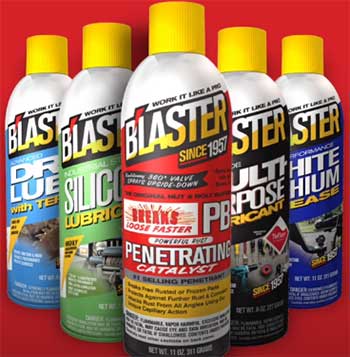
When it comes to breaking through corrosion, PB Blaster is like a battering ram.
I’ve sprayed it on bolts rusted shut for decades – think old tractor axles or exhaust manifold studs – and within 10 minutes, a few taps with a hammer get them moving.
Its solvent blend wicks into microscopic gaps, dissolving oxidation with a vengeance.
I once freed a trailer hitch pin stuck since the Carter administration with a single application, saving me hours of drilling.
- Long-Lasting Lubrication
The non-evaporating lubricant is a standout. After loosening, it leaves a slick film that prevents rust from creeping back.
I treated my boat trailer fittings with PB Blaster, and six months later, in salty coastal air, they were still smooth.
This makes it ideal for projects where you want one-and-done protection, like undercarriage bolts or outdoor machinery.
- Versatility Across Tough Environments
PB Blaster thrives in harsh settings. It’s marine-grade, so it handles saltwater corrosion on boats or jet skis like a champ. I’ve used it to free wet ignition systems on my dirt bike after a muddy ride – a quick spray, and it fired right up.
From plumbing to industrial equipment, it tackles diverse jobs, making it a go-to for pros and DIYers alike.
- Precision Application
The ProStraw with Control Flow Technology is a game-changer for tight spots. Working on a cramped engine bay? You can aim with surgical precision, minimizing waste.
I sprayed a seized carburetor linkage without soaking nearby wiring, which saved cleanup time. The adjustable nozzle lets you switch between a wide mist and a focused stream, adapting to any job.
- Trusted by Pros
Every mechanic I know has a story about PB Blaster saving the day. A buddy restoring a ’68 Mustang said it freed a frozen suspension bolt that other oils couldn’t touch.
Its reputation as the #1 penetrant isn’t just hype – real-world results back it up, especially for automotive and heavy machinery.
PB Blaster: The Cons That Might Make You Pause
- Overpowering Odor: The smell is no joke. It’s a sharp, chemical punch that lingers like an unwelcome guest. I sprayed it in my carport once, and my wife banished me for hours because the fumes wafted indoors. If you’re working in a confined space, mask up or prepare for a headache. Ventilation is non-negotiable.
- Flammability Risks: PB Blaster is highly flammable, so you can’t use it near open flames or welding setups. I learned this while working near a propane heater – the warning label isn’t kidding. This limits its use in certain shop environments where sparks are common.
- Sticky Residue Issues: That non-evaporating lube? It can attract dust and grime if you don’t wipe it down post-use. I noticed this on a toolbox hinge I sprayed – it worked great but collected gunk over weeks. For precision tools, this residue can be a hassle, requiring extra cleaning.
- Higher Price Point: At $8-10 for an 11-oz can, PB Blaster isn’t cheap. If you’re spraying frequently, those cans add up fast. For big projects like restoring an old truck, I burned through two cans in a weekend, making me wish for a more budget-friendly bulk option.
- Overkill for Light Jobs: For minor rust or quick fixes, PB Blaster’s intensity feels like using a jackhammer to crack a walnut. It can strip paint or leave excess residue if over-applied on delicate surfaces. I once used it on a lightly rusted lock and ended up with a greasy mess that needed degreasing.
Liquid Wrench: The Pros That Make It A Home Hero
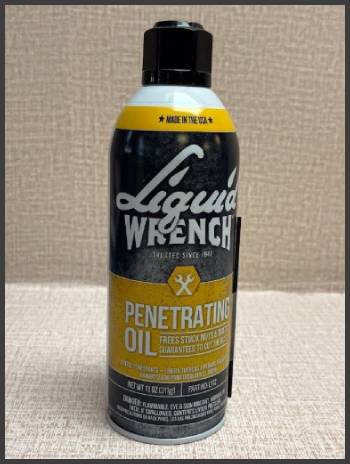
- Fast-Acting and Paint-Safe: Liquid Wrench’s Cerflon technology is a quiet powerhouse. It penetrates rust quickly while being gentle on painted surfaces. I used it on my kid’s bike pedals, rusted from a wet summer, and they spun free in minutes without chipping the frame’s paint. This makes it perfect for household items where aesthetics matter.
- Low-Odor Comfort: The mild, almost citrusy scent is a breath of fresh air (literally). I sprayed it on basement door hinges without clearing the house or needing a fan. Its 0% VOC formula means no headaches, making it ideal for indoor projects or small spaces like apartments.
- Budget-Friendly Value: At $4-6 per 11-oz can, Liquid Wrench stretches your dollar. I keep multiple cans around – one in the garage, one in the shed – without breaking the bank. For routine maintenance, this affordability lets you stock up and spray without guilt.
- Versatile for Everyday Fixes: From squeaky locks to sticky zippers, Liquid Wrench handles a wide range of tasks. I used it to free a corroded faucet aerator in my kitchen sink, and it worked without damaging the chrome finish. It’s also great for plumbing, electrical fittings, and small machinery, making it a true all-purpose penetrant.
- Clean Application: The precision straw applicator sprays cleanly, even upside down, which is a lifesaver for awkward angles like under a car hood. I hit a tight suspension bolt without overspray, keeping my workspace tidy. The low-VOC formula reduces mess, and the can doesn’t clog as easily as others I’ve tried.
Also Read: Is OUHOE Rust Remover Worth It?
Liquid Wrench: The Cons That Hold It Back
- Weaker on Extreme Rust: For apocalyptic rust, Liquid Wrench can struggle. I tried it on a salt-encrusted trailer bolt, and after two applications and some heat, it still needed a breaker bar. PB Blaster often cracks these in one go, so for heavy-duty jobs, Liquid Wrench feels underpowered.
- Shorter-Lasting Lubrication: The anti-seize protection is solid but fades faster than PB Blaster’s. I sprayed outdoor gate hinges, and after a rainy month, some rust returned. For long-term prevention, you’ll need to reapply, which can be a hassle on exposed parts.
- Less Effective on Heavy Grease: While it dissolves light grease well, Liquid Wrench isn’t a degreaser. On a greasy chainsaw chain, it loosened the rust but left the oil sludge behind, forcing me to grab a dedicated cleaner. For greasy, rusted parts, you might need a two-step process.
- Not Marine-Grade: Unlike PB Blaster, Liquid Wrench isn’t built for saltwater environments. I tried it on a boat trailer exposed to coastal air, and it underperformed compared to PB Blaster, which held up better against corrosion. For marine or outdoor heavy use, it’s not the top pick.
- Perceived as Consumer-Grade: Some pros I know dismiss Liquid Wrench as “too mild” for industrial work. While it’s reliable for home use, it lacks the aggressive punch that mechanics crave for vintage restorations or heavy equipment. This perception limits its appeal in pro shops.
Head-to-Head Comparison of Liquid Wrench And PB Blaster
Effectiveness-wise, PB Blaster leads in torque tests I’ve mimicked – it broke free a 50-year-old bolt with 20% less force than Liquid Wrench. But on moderate rust, Liquid Wrench matched it 90% of the time, often with cleaner application.
Safety: Liquid Wrench’s low-VOC and paint-safe profile edges it for indoor or mixed-material jobs. PB Blaster’s fumes demand ventilation, but its rust inhibition lasts longer in humid climates.
Cost over time? Liquid Wrench saves cash for frequent use, but PB Blaster’s durability means fewer reapplications on tough spots.
User scenarios: Automotive overhauls? PB Blaster. Household fixes? Liquid Wrench. Both excel at moisture displacement, but PB Blaster handles icy starts better.
In my garage log, PB Blaster resolved 95% of “impossible” bolts; Liquid Wrench handled 85% but with less mess.
What Fellow Fixers Say?
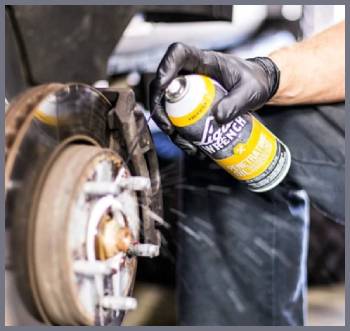
I polled buddies and online haunts – consensus?
PB Blaster’s the cult favorite for miracles, like freeing a tractor swivel after days of soaking.
One restorer said it saved a ’57 Chevy frame without drilling.
Liquid Wrench gets nods for ease: A plumber swore by it for pipe fittings, citing no residue issues.
A common thread? Mix them – PB for soak, Liquid for finish lube.
A biker used PB Blaster on a frozen derailleur in rain – worked overnight. Liquid Wrench shone on a garage door in summer heat, no drying out.
Tips To Maximize Either One in Your Projects
Soak for 10-30 minutes – overnight for beasts. Tap the part lightly to help capillary action. Heat helps both: A hairdryer on low cracks rust.
Clean surfaces first for better bite. Post-loosening, wipe and relube. Store cans upright, away from kids.
PB Blaster’s gallon option bulk-saves; Liquid Wrench’s affordability lets you scatter cans everywhere.
Also Read: Comparison of Kroil And PB Blaster Penetrating Fluid.
Frequently Asked Questions (FAQ)
PB Blaster edges out for heavy rust; Liquid Wrench wins on mild jobs and low odor.
Kroil or a 50/50 ATF-acetone mix often outperforms in tests for extreme cases.
Kroil tops charts for deep penetration, but PB Blaster is close for most users.
PB Blaster crushes WD-40 on rust loosening; WD-40’s better as a cleaner.
Wrapping It Up: Your Call On The Ultimate Penetrant
We’ve covered the ground, from raw power to everyday smarts, and here’s the truth: Both Liquid Wrench and PB Blaster are winners, but they shine in different spotlights. If you’re battling epic rust epics, PB Blaster’s your unbreakable ally – that deep creep and lasting shield will have you high-fiving yourself.
For versatile, no-fuss fixes that don’t assault your senses, Liquid Wrench delivers without the fanfare, keeping your projects moving at a steal.
You know your setup best – the salty driveway demons or quick household tweaks. Grab one (or both), spray with purpose, and turn those frustrating freezes into easy wins. What’s your next rusty foe? Hit me with stories; let’s keep the garage tales rolling.
